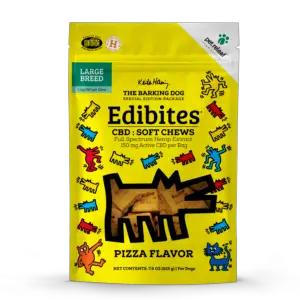
Key points
- Canine gastritis is a condition when a dog’s stomach lining becomes inflamed. This condition can be either acute or chronic;
- Typical signs of this condition include loss of appetite or anorexia, frequent vomiting, diarrhea, strong thirst, pale mucous membranes in the mouth, etc.;
- Kidney damage, improper feeding, ingesting non-food items, poisoning and medication, constant stress, and hormonal diseases can cause canine gastritis;
- While most acute cases can be treated at home, chronic cases require medical intervention;
Inflammation of the stomach is common in dogs and can have a variety of causes. Just like humans, dogs can experience nausea, cramps, or abdominal pain. However, our pets can’t tell us about their health issues for apparent reasons, so canine gastritis often goes undetected. This is why it is so crucial for you to be able to recognize and combat gastric mucosal inflammation in your dog.
Table of Contents
What is Gastritis in Dogs?

The word “gastritis” is derived from the Greek “gaster”, meaning stomach, and the ending “itis”, meaning inflammation. It is also known as gastric mucosal inflammation. Normally, a dog’s stomach wall is protected by a barrier made up of epithelial cells and mucus. However, if this protective layer is not intact, the stomach acid comes in direct contact with the stomach walls and starts damaging the cells. The resulting release of histamines also stimulates acid production, which further exacerbates the symptoms.
Gastritis can be either acute, with symptoms appearing only as a short episode, or chronic, where symptoms are permanent and may intensify over time.
Symptoms of Gastritis in Dogs

If your dog suffers from acute gastritis, this is particularly noticeable through severe vomiting, which is sometimes accompanied by diarrhea. Since the symptoms are similar to those of a regular gastrointestinal infection, inflammation of the gastric mucosa is usually not the first thing dog owners think of when they notice these symptoms in their pets.
In the case of chronic gastritis, the affected dog will regularly vomit frothy, yellow bile. If the pet is also suffering from a stomach ulcer, there may also be blood in the vomit.
Apart from that, chronic gastritis in dogs manifests itself as stomach pain, lack of appetite, weight loss, dehydration, lethargy or depression, abdominal pain, increased thirst, dull coat, and pale mucous membranes. In addition, the affected animals often have black stool due to stomach bleeding.
What Causes Gastritis in Dogs?
A number of different causes can trigger gastritis. In many cases, it is virtually impossible to determine the exact reason for the inflammation of the gastric mucous membranes.
Possible causes of gastritis in dogs include:
- Eating raw food, fatty foods, trash, sand and cat litter, or poisonous plants;
- Consuming inappropriate foodstuffs or being fed too much food;
- Stress. When dogs experience stressful situations, their stomach environment can often become too acidic. This can damage the lining of the stomach;
- Medication. Some medications directly attack pets’ gastric mucosa and gastric flora. These drugs include some pain relievers, antibiotics, and non-steroidal anti-inflammatory drugs;
- Infestations of parasites such as worms or giardia;
- Foreign bodies. If a dog consumes some irritating or corrosive substance, it can damage the pet’s gastric mucous membrane. Even if your pet eats snow mixed with a lot of salt, it can lead to gastritis in a dog. At the same time, foreign bodies can damage the lining of the pet’s stomach and thus trigger gastritis in dogs.
- Other diseases such as liver and pancreas problems, mast cell tumors, granulomatous gastric disease, diabetic ketoacidosis, immune disease, stomach cancer, inflammatory bowel disease, etc.;
- Helicobacter and other pathogens;
- Food intolerance.
How is Canine Gastritis Diagnosed?
An accurate diagnosis is required to treat gastric mucosal inflammation. Your veterinarian will prescribe treatment depending on the type of gastritis your pet is suffering from.
When taking your pet to a vet for an examination, make sure to write down the date of the last time you gave your pet deworming medicine, as this information is important for the veterinarian. At the appointment, your vet will take a fecal sample to check your dog’s stool for possible parasites. They will also perform an endoscopic examination to examine your dog’s stomach. This procedure is called gastroscopy. The vet will need to put your dog under general anesthesia to perform this procedure. The vet will also use gastroscopy to take tissue samples from your dog’s stomach.
X-rays and ultrasound can also be used to provide a reliable diagnosis. For example, an x-ray can be done by your veterinarian to determine if there are any foreign objects in your dog’s stomach.
Ultrasound examination makes it possible to detect tumors or track down foreign bodies that are not visible on the x-ray image. At the same time, the vet can also use an ultrasound to examine organs such as the liver or intestines.
How to Treat Gastritis in Dogs?
Therapy should always be carried out after a thorough examination. This often requires a lot of patience, both from humans and animals. If your pet is suffering from mild gastritis that only causes it to vomit, simply helping calm the dog’s stomach will be sufficient. You can do this by avoiding giving your dog food and only giving it water to drink for the next twelve to twenty-four hours. Even if this is difficult and the dog’s gaze makes you want to give up and feed the pet, you shouldn’t give in. Food deprivation is necessary to allow the dog’s stomach to calm down.
After twelve hours, you can put your dog on a light diet. Despite your dog’s cravings, you should only feed it small portions of food at first and make sure that the pet doesn’t vomit. Then, if your dog seems to feel fine, you can increase the serving size back to normal over the course of a few days.
In conventional medicine, chronic gastritis is treated with anti-emetic medications, antibiotics, gastric acid inhibitors, proton pump inhibitors, sucralfate preparations, and H2 receptor antagonists. Vomiting and diarrhea will make your dog lose a large amount of fluid, making it necessary to keep the pet’s fluid balance up with infusions. Keep in mind that this treatment should be prescribed only by a certified veterinarian.
Prognosis for Dogs with Gastritis
As a rule, vets recommend treating canine gastritis. However, acute inflammation of the gastric mucous membranes will usually go away on its own after twenty-four hours. However, the treatment for chronic gastritis can take a few months.
How Can I Prevent Gastritis in My Dog?
Since there are many different causes of gastritis, it is not always easy to prevent stomach problems in dogs. However, you can take the following steps to minimize the chances of your pet developing this disease:
- Try to establish regular feeding times for your dog.
- Do not expose your pet to stressful situations and events.
- Remember about regular deworming treatments that should be carried out every twelve weeks.
FAQ
How do you treat gastritis in dogs?
If your dog is suffering from acute gastritis, no medical intervention is typically needed. Stop feeding the animal for at least 12 hours. Provide it with water in small amounts during the first 12 hours. Afterward, you can start giving your pet small portions of low-fat food. If no vomiting occurs, gradually increase the size of servings.
How long can gastritis last in dogs?
Although the symptoms of acute gastritis are severe, they usually clear up within twenty-four hours. But in the case of chronic gastritis, your dog might need up to a few months to recover from the condition and stop exhibiting its symptoms.
Is gastritis in dogs painful?
Gastritis is a very unpleasant and painful condition. Your dog might experience abdominal pain, nausea, cramps, etc.





